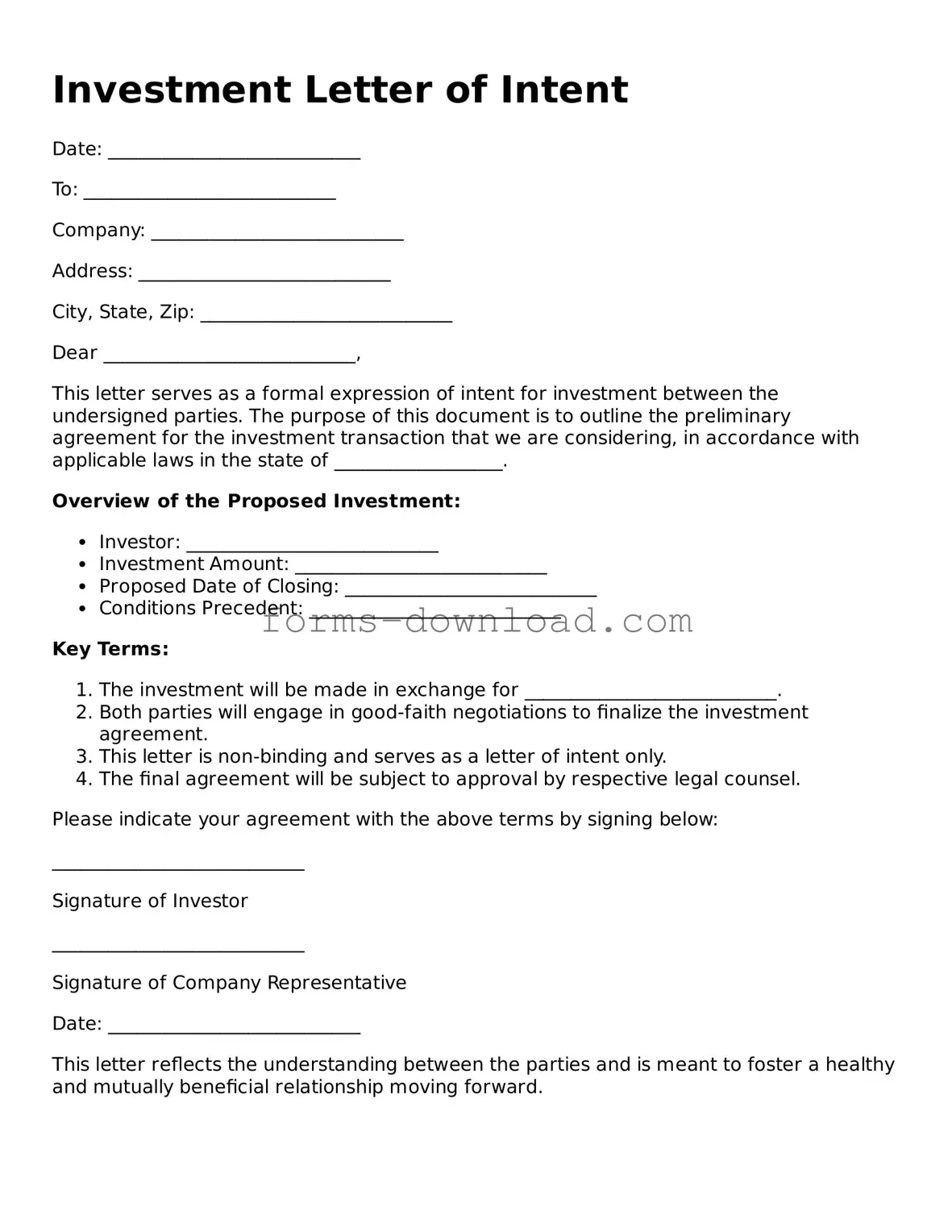Investment Letter of Intent
Date: ___________________________
To: ___________________________
Company: ___________________________
Address: ___________________________
City, State, Zip: ___________________________
Dear ___________________________,
This letter serves as a formal expression of intent for investment between the undersigned parties. The purpose of this document is to outline the preliminary agreement for the investment transaction that we are considering, in accordance with applicable laws in the state of __________________.
Overview of the Proposed Investment:
- Investor: ___________________________
- Investment Amount: ___________________________
- Proposed Date of Closing: ___________________________
- Conditions Precedent: ___________________________
Key Terms:
- The investment will be made in exchange for ___________________________.
- Both parties will engage in good-faith negotiations to finalize the investment agreement.
- This letter is non-binding and serves as a letter of intent only.
- The final agreement will be subject to approval by respective legal counsel.
Please indicate your agreement with the above terms by signing below:
___________________________
Signature of Investor
___________________________
Signature of Company Representative
Date: ___________________________
This letter reflects the understanding between the parties and is meant to foster a healthy and mutually beneficial relationship moving forward.
